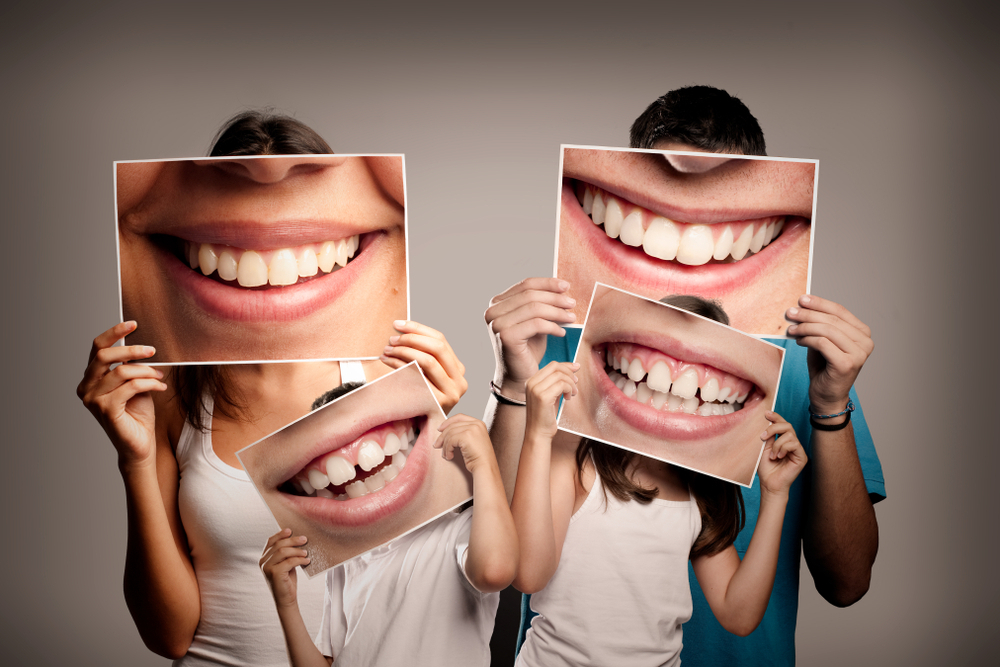About Legacy Orthodontics
About Legacy Orthodontics
Blog Article
Legacy Orthodontics Fundamentals Explained
Table of ContentsLegacy Orthodontics Things To Know Before You BuyGet This Report about Legacy Orthodontics4 Simple Techniques For Legacy OrthodonticsThe Ultimate Guide To Legacy OrthodonticsThe Definitive Guide to Legacy Orthodontics
At Advanced Orthodontics, we supply clients with a holistic therapy experience. Furthermore, we provide adjustable therapy schedules, flexible settlement choices and a fun, pleasurable experience. orthodontics. Call ( 480) 357-4900 today for more details and routine a visit.An orthodontist is a dental professional educated to identify, prevent, and treat teeth and jaw abnormalities. Orthodontists work with individuals of all ages, from children to adults.
Malocclusion, or misaligned teeth, can bring about dental problems, consisting of dental cavity, gum tissue condition, and challenging or uncomfortable eating. Not everyone is born with straight teeth. If you have a poor bite or huge spaces between your teeth, you might desire to speak with a dental expert concentrating on orthodontic treatment.
A Biased View of Legacy Orthodontics
( Picture Credit History: DigitalVision/Getty Images) Orthodontists make use of dealt with and detachable oral gadgets, like braces, retainers, and bands, to alter the placement of teeth in your mouth. Orthodontic therapy is for oral irregularities, including: Uneven teethBite issues, like an overbite or an underbiteCrowded teeth or teeth that are too far apartJaw misalignmentThe goal of orthodontic therapy is to boost your bite.
A healthy bite ensures you can eat, chew, and talk correctly. While you might consider orthodontists as generally for kids or teens who need braces, they can fix dental problems at any age. Orthodontists participate in college, dental school, and orthodontic school. After college graduation, they invest 2 or 3 years in an orthodontic residency program.
All orthodontists are dental practitioners, yet not all dental experts are orthodontists. Orthodontic residency programs provide intensive, concentrated guideline for dental specialists. They concentrate on 2 areas: Just how to effectively and securely relocate teeth How to properly lead advancement in the teeth, jaw, and faceOnce an orthodontist has finished training, they have the option to come to be board licensed.
All about Legacy Orthodontics
Malocclusion leads to tooth congestion, an askew jaw, or uneven bite patterns. Malocclusion is usually treated with: Your orthodontist connects metal, ceramic, or plastic square bonds to your teeth.
Some people require a headwear to help move teeth into line with pressure from outside the mouth. A retainer is a custom-made tool that maintains your teeth in location.
They're most often utilized on kids. They can produce added room in the mouth without needing to draw teeth. If you have a severe underbite or overbite, you may require orthognathic surgical treatment (likewise called orthodontic surgical procedure) to extend or reduce your jaw. Orthodontists make use of cords, medical screws, or plates to support your jaw bone.
You might need to see an orthodontist if you have: Crowding or otherwise adequate room for all of your teethOverbite, when your upper teeth come by your base teethUnderbite, when your base teeth are as well much forwardSpacing or problems with gapsCrossbite, which is when your upper teeth fit behind your bottom teeth when your mouth is closedOpen bite or a vertical gap in between your front base and top teethMisplaced midline, when the center of your bottom and top teeth do not align Dealing with an oral malocclusion can: Make attacking, chewing, and speaking easierImprove the proportion of our face and your total appearanceEase discomfort from temporomandibular joint conditionsSeparate your teeth and make them less complicated to clean up, helping prevent dental cavity or cavities It's often a dental practitioner that initially notices misaligned teeth during a regular examination.
Legacy Orthodontics for Beginners

Throughout your very first orthodontic assessment, you'll likely have: An oral examPhotos taken of your face and smileDental X-raysPanoramic (360 level) X-rays of your face and headImpressions to develop mold and mildews of your teethThese tests will certainly help your orthodontist recognize exactly how to wage your therapy. leesburg clear braces. An orthodontist is a dentist that's had training to treat your teeth and jaw
Orthodontists may carry out surgical treatment, exams,X-rays,and more to aid you obtain a much more comfortable, much healthier smile. An orthodontist is concentrated on your bite, so something like a broken tooth would be taken care of by a dental practitioner. Orthodontists are dentists but not all dentists are orthodontists. Orthodontists are concentrated on your bite, or the means your teeth fit with each other, and the straightness of your teeth.
Ever before wondered how celebrities always seem to have flawlessly lined up teeth? Orthodontists are dental professionals that focus on remedying abnormalities in the teeth and jaws.
Things about Legacy Orthodontics

While braces are the most generally identified orthodontic treatment, orthodontists have a diverse toolkit at their disposal. The particular approach chosen relies on the severity of the situation, the client's age, and private choices. These tried-and-true braces use a system of braces adhered to the teeth and connected by wires.
Clear aligners, like Invisalign, are a prominent choice for clients looking for a more discreet therapy alternative. These detachable trays are custom-made to gradually move the teeth's setting. Headgear might be made use of in combination with braces or aligners to use additional targeted pressures, specifically for correcting jaw disparities. In cases of narrow jaws, palatal expanders can be used to create room for appropriate tooth placement.
Report this page